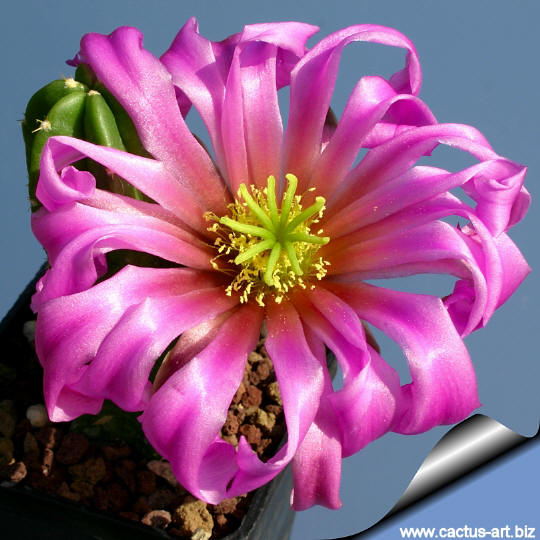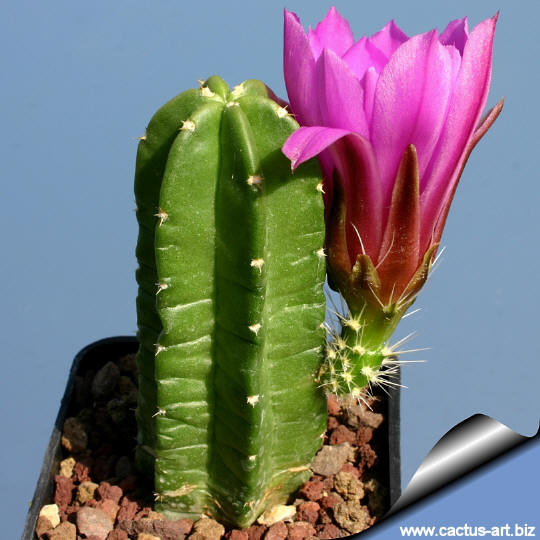|
|
|
Family:
Cactaceae (Cactus
Family) Echinocereus morricalii Riha 1975
TL: Mexico, Nuevo Leon, Barranca de las
Garrapatassouth of
Monterrey, D. B. Morrical (PRC 322).
Accepted
Scientific name:
Echinocereus viereckii ssp. morricalii (Ríha)
N.P.Taylor 1997
Origin:
Mexico (Nuevo Leon, Monterrey)
Etymology: Named after Dale Morrical (1908-1994),
US-American electronic technician and cactus amateur.
Conservation status: Listed in
CITES appendix 2.
Synonyms:
- Echinocereus var. morricalii (Riha) Taylor 1985
- Echinocereus blanckii var. inermis Heyer 1989 pro
syn.
- Echinocereus mutitangularis var. limensis = Haageocereus sp.
-
Echinocereus multiangularis var. maletianus = ?
-
Echinocereus multiangularis var. pallidior = ?
-
Echinocereus multiangularis = Haageocereus sp.
|
|
Description: Clustering specie branching
profusely from the base with almost spineless stems.
Stems: Up to 50 cm long, 7.5 cm in diameter, soft , cylindrical ±
tapering toward the tips erect to sprawling Yellowish-green to bright
green that will hold purple colour with enough bright light, During the
winter rest they become wrinkled and flabby from lack of water and
shrink up about 1/3 their size as they consume their stored water. With
regular water they plump up quickly.
Ribs: 6-7 even non-tubrculate.
Spines: Almost spineless, the spine if present are very short,
yellowish up to 2mm long.
Flowers: Magnificent magenta from the sides of the stems, short-funnellform,
very large up to 10 cm in diameter or more.
Blooming seson: Blossoms
in May.
Fruit: Globose, green, fleshy.
Echinocereus viereckii subspecies:
The "viereckii" subspecies has spines that are rarely
longer than 2,5 cm and 6 to 9 tuberculate ribs.
The "huastecensis" subspecies has spines that are up to about 10
cm long and 8 to 13 ribs.
The "morricalii" subspecies is spineless or nearly spineless and
has 6 or 7 non-tubercled ribs.
The flowers on all subspecies are
Bright magenta.

|
|
|
|

Cultivation:
This cactus is
widely cultivated for its
flowers, it is among the easiest
species to grow, flower and propagate. Indicated
for full sun exposure. Water
regularly from March to October. Rot prone in winter, it needs good
drainage, It should be kept in a cool place
during winter rest (it can
briefly tolerate temp. as low as -7°C).
Without this cool winter period these plants normally won't get
many buds. Clustering,
great for a hanging display. Stems may possibly become purple and limp
in winter, but revitalize in early spring.
Propagation: Seeds or cutting.


|
|